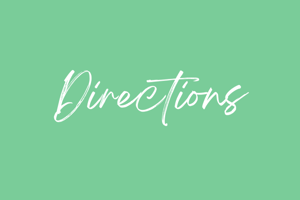Podcast
Questions and Answers
¿Cómo puedo llegar al Edificio Empire State?
¿Cómo puedo llegar al Edificio Empire State?
Pidiendo instrucciones paso a paso para llegar a un lugar específico.
¿De qué está hecha la mesa?
¿De qué está hecha la mesa?
Determinar el material de un objeto.
¿Qué parece el nuevo coche?
¿Qué parece el nuevo coche?
Describir la apariencia de un objeto.
¿Dónde está la estación de tren?
¿Dónde está la estación de tren?
¿Cómo puedo llegar al aeropuerto?
¿Cómo puedo llegar al aeropuerto?
¿De qué está hecha la silla?
¿De qué está hecha la silla?
¿Para qué se utiliza la pregunta '¿Qué huele?'
¿Para qué se utiliza la pregunta '¿Qué huele?'
¿Cómo se utiliza la pregunta '¿Qué sabor tiene?'
¿Cómo se utiliza la pregunta '¿Qué sabor tiene?'
¿Qué se describe al usar la pregunta '¿Qué se siente?'
¿Qué se describe al usar la pregunta '¿Qué se siente?'
¿Por qué son importantes estas expresiones en la comunicación?
¿Por qué son importantes estas expresiones en la comunicación?
¿En qué situaciones son útiles las preguntas sobre olor, sabor y textura?
¿En qué situaciones son útiles las preguntas sobre olor, sabor y textura?
Study Notes
Asking for Directions and Describing Things
When navigating unfamiliar environments or discussing the characteristics of objects, we often use specific expressions to convey our needs and observations. In this article, we'll explore several phrases related to asking for directions and describing things.
Asking for Directions
-
"Where's the..."
- This is a simple yet versatile question. For example:
- "Where's the nearest pharmacy?"
- "Where's the train station?"
- "Where's the closest ATM?"
- This is a simple yet versatile question. For example:
-
"How do I get to..."
- This question is used to request step-by-step instructions to reach a specific location. For example:
- "How do I get to the Empire State Building?"
- "How do I get to the Eiffel Tower?"
- "How do I get to the airport?"
- This question is used to request step-by-step instructions to reach a specific location. For example:
-
"Can you point me in the direction of..."
- This question is more polite and informal than the previous two. For example:
- "Can you point me in the direction of the restaurant?"
- "Can you point me in the direction of the park?"
- "Can you point me in the direction of the mall?"
- This question is more polite and informal than the previous two. For example:
Describing Things
-
"What's made of..."
- This question is used to determine the material of an object. For example:
- "What's the table made of?"
- "What's the dress made of?"
- "What's the chair made of?"
- This question is used to determine the material of an object. For example:
-
"What does it look like?"
- This question is used to describe the appearance of an object. For example:
- "What does the new car look like?"
- "What does the painting look like?"
- "What does the cake look like?"
- This question is used to describe the appearance of an object. For example:
-
"What does it smell like?"
- This question is used to describe the fragrance of an object or place. For example:
- "What does the coffee shop smell like?"
- "What does the perfume smell like?"
- "What does the flowers smell like?"
- This question is used to describe the fragrance of an object or place. For example:
-
"What does it taste like?"
- This question is used to describe the flavor of food and beverages. For example:
- "What does the soup taste like?"
- "What does the chocolate cake taste like?"
- "What does the wine taste like?"
- This question is used to describe the flavor of food and beverages. For example:
-
"What does it feel like?"
- This question is used to describe the texture or temperature of an object. For example:
- "What does the sand feel like?"
- "What does the sweater feel like?"
- "What does the water feel like?"
- This question is used to describe the texture or temperature of an object. For example:
These expressions are essential tools in our communication arsenal when traveling, discussing objects, or navigating environments. By using them, we can convey our needs and observations clearly and efficiently, making our interactions more productive and our experiences more enjoyable.
Studying That Suits You
Use AI to generate personalized quizzes and flashcards to suit your learning preferences.
Description
Explora una variedad de frases relacionadas con pedir direcciones y describir objetos en entornos desconocidos. Desde preguntar por indicaciones hasta describir materiales, apariencias, olores, sabores y texturas, estas expresiones son herramientas esenciales para comunicarte de manera clara y eficiente en diferentes situaciones.




